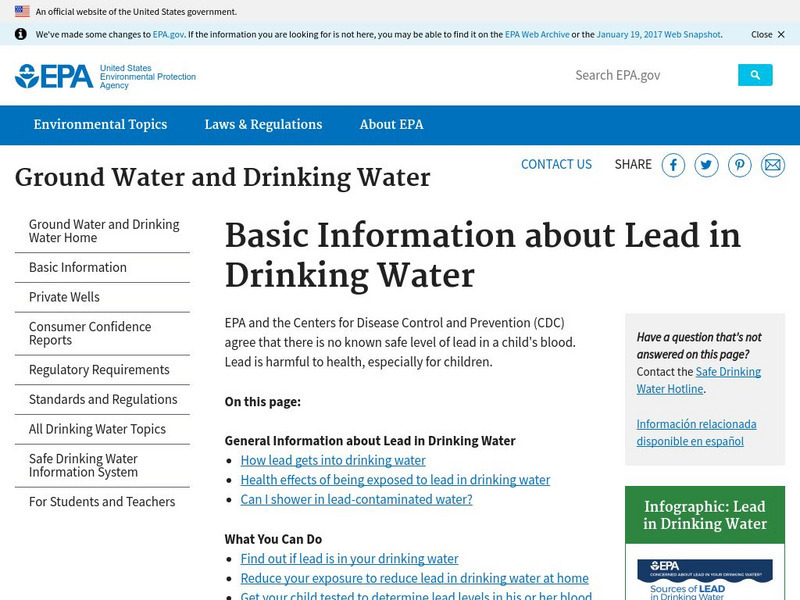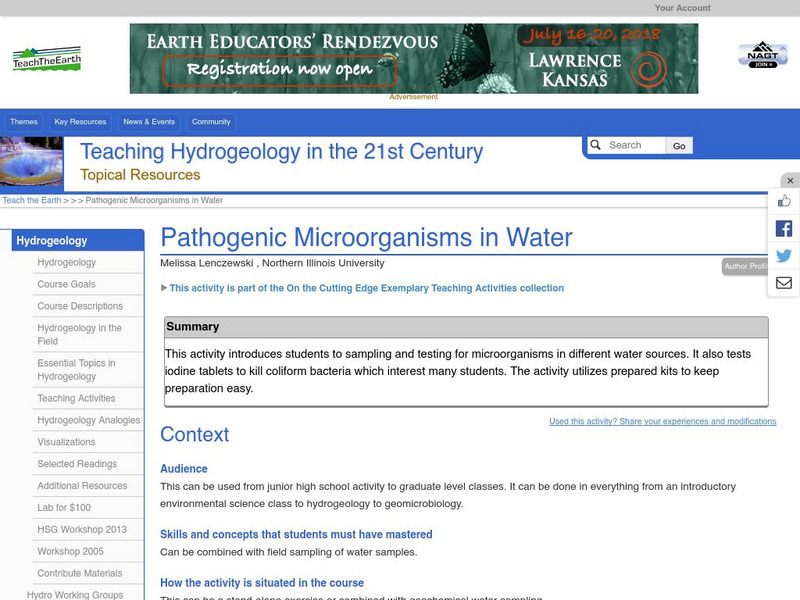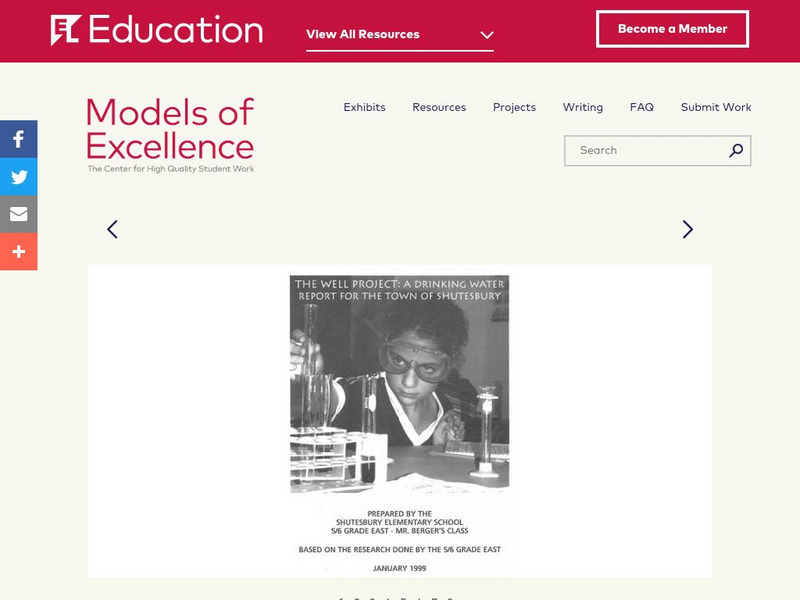Hi, what do you want to do?
Virginia Department of Education
Mystery Iron Ions
Young chemists perform an experiment to determine if a compound is iron (II) chloride or iron (III) chloride. Then they determine the formula, balance the equation, and answer analysis questions.
Curated OER
Water Hardness- Causes and Testing
Eighth graders examine what materials cause water hardness and the relative measure of water hardness in a two part lab activity. In part one, 8th graders add an assigned soap test solution to eleven different test tube solutions in...
Curated OER
Is Your Water Clean?
Students compare water quality of different sources. They test water samples for odor, phosphates, pH, bacteria, and dissolved solids. they fill out a data table and answer questions about their findings.
Curated OER
Is Your Water Clean?
Students conduct tests of water samples from different sources, such as a local river, tap water, and an irrigation ditch. After determining which pollutants are present in each sample, students hypothesize the possible sources of the...
Curated OER
Where's the Water?
Fifth graders conduct an investigation into water purification during a role play situation in an Amazon Rainforest. They design a scientific experiment for cleaning and filtering water.
Curated OER
Analyze the Results
Students conduct water tests and sample macroinvertebrates from a nearby source to make a general determination about the overall quality of water. They use worksheets and analyze data as part of a larger unit.
Curated OER
Save a Drop for Me
Students discuss the meaning of philanthropy and how it applies to people caring about the water supply. In this water conservation lesson, students explore possible water conservation activities and select a project. Students will...
US Environmental Protection Agency
Epa: Basic Information About Lead in Drinking Water
Learn about the threat of lead in drinking water and what actions you can take to prevent or deal with exposure.
Other
Garden Club of America: Drinking Water Safety [Pdf]
An information page on understanding drinking water safety. It covers legislation, contaminants, private wells, water testing, water filters, and boiling water.
TeachEngineering
Teach Engineering: Test and Treat Before You Drink
Young scholars learn about water quality testing and basic water treatment processes and technology options. Biological, physical and chemical treatment processes are addressed, as well as physical and biological water quality testing,...
TeachEngineering
Teach Engineering: Should I Drink That?
Students perform the first steps that environmental engineers do to determine water quality - sampling and analysis. Student teams measure the electrical conductivity of four water samples using teacher-made LED conductivity testers and...
Science Education Resource Center at Carleton College
Serc: Pathogenic Microorganisms in Water
Use this lesson plan to introduce students to testing water sources for pathogenic microorganisms. Students will learn methods for groundwater sampling to evaluate water quality. Lesson plan includes student worksheets.
EL Education
El Education: The Well Project: A Drinking Water Report
In this lesson, students collected and tested well water from various locations to determine the quality of surface water used as drinking water throughout their town. Students prepared a general report for the town as well as specific...













![Garden Club of America: Drinking Water Safety [Pdf] Handout Garden Club of America: Drinking Water Safety [Pdf] Handout](https://static.lp.lexp.cloud/images/attachment_defaults/resource/large/FPO-knovation.png)



